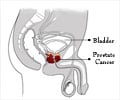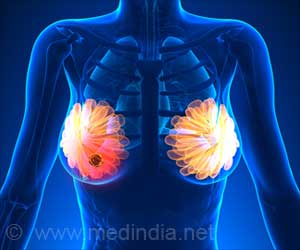A multidisciplinary team of medical practitioners in the US has started using a real-time system to implant radiation-emitting seeds in patients with prostate cancer.
A multidisciplinary team of medical practitioners in the US has started using a real-time system to implant radiation-emitting seeds in patients with prostate cancer.
Doctors at the Kimmel Cancer Center at Jeferson and Thomas Jefferson University Hospital in Philadelphia have revealed that the new mechanism is being used for imaging and planning purposes only.The real-time system to implant radiation-emitting seeds has been developed by Nucletron, a technology company based in The Netherlands.
According to cancer experts, the system may help with the actual placement of the seeds.
The team—involving urologists, surgeons, radiation oncologists, and radiation physicists—hopes that the new federal Food and Drug Administration-approved technology will make an already good system even better, adding scientific precision to a treatment that currently relies mainly on physician experience and skill.
“The device is a step above the traditional technique because it makes use of a more sophisticated approach that allows for a coordinated, real-time imaging-based implantation of seeds,” Dr. Richard Valicenti, associate professor of radiation oncology at Jefferson Medical College of Thomas Jefferson University, said about the Nucletron device.
Patients have two options for treatment for localized, low-risk prostate cancer confined to the prostate—surgery or radiation therapy.
This therapy has been proven to be very effective and safe, providing a good alternative to surgical removal of the prostate, while reducing the risk of certain long-term side effects, such as impotence. The seed radioactivity decays with time, while the seeds stay within the treatment area.
“For example, putting in the rectal ultrasound probe has to be done slowly by hand. Now, the device does it and takes measurements of the size and location automatically of the target gland,” he adds.
The device thus gathers the imaging information, such as the dimensions of the patient’s prostate, and downloads it into a computer system, where it is rapidly processed.
Based on the data collected, the medical practitioners specify the parameters of treating the cancer—such as how much dose to give the prostate, how much extra dose to give to the area of the tumour and the positions in which to give the radiation.
Dr. Valicenti says that all this is done in less time than previously possible with standard techniques.
“Up until recently, we would produce a plan in the outpatient setting that we hoped to recapitulate in the operating room. But there was always the concern that what we saw initially might not match the situation later,” says Dr. Adam Dicker, professor of radiation oncology at Jefferson Medical College.
He says that the patient’s position and the location and condition of his prostate can affect planning.
Since the new system enables real-time planning in the operating room, he says: “If an area is under-dosed, you can find out right away and make corrections.”
The Nucletron device provides a multidimensional view of the prostate and the “ability to process and accumulate more precise information, constantly updating and readjusting the treatment plan.”
Source-ANI
SRM /J
 MEDINDIA
MEDINDIA
 Email
Email

![Prostate Specific Antigen [PSA] Prostate Specific Antigen [PSA]](https://www.medindia.net/images/common/patientinfo/120_100/prostate-specific-antigen.jpg)







